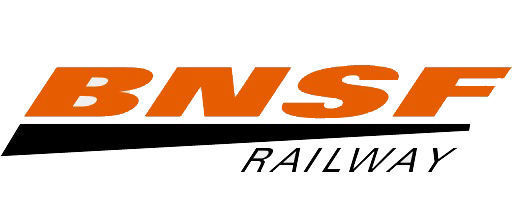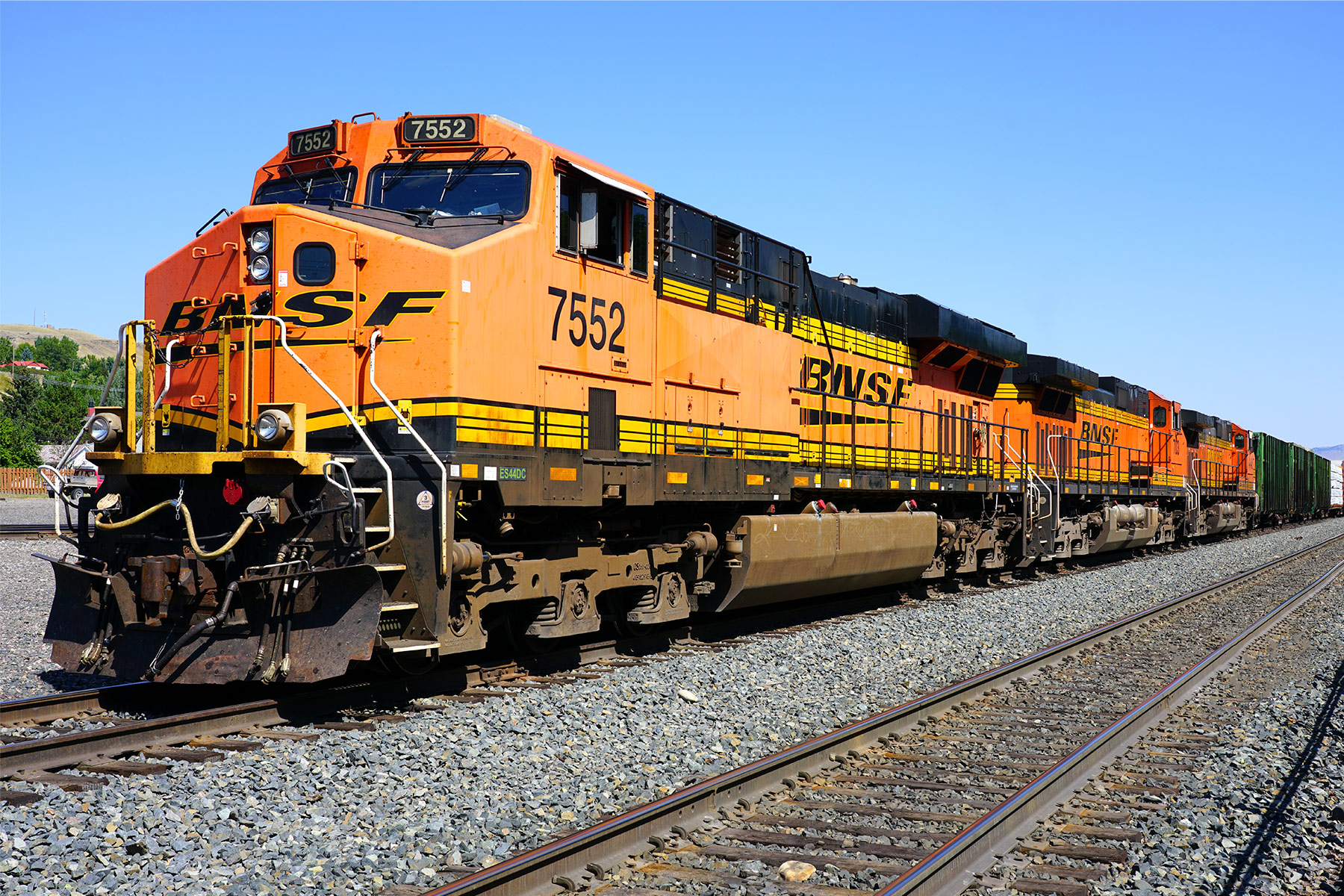BNSF Railway operates one of the largest railroad networks in North America, covering the western two-thirds of the United States. BNSF plays a vital role in the U.S. Economy, hauling the products. High quality Bnsf gifts and merchandise. Inspired designs on t-shirts, posters, stickers, home decor, and more by independent artists and designers from around the world. All orders are custom made and most ship worldwide within 24 hours. BNSF Logistics is looking for qualified carriers and service providers that will contribute to our customer's success with reliable, quality service. Skip to content. We deliver what matters. This is the promise and the power of BNSF Logistics. Expanding what's possible. Above all expectations.
BILLINGS — As the cold weather starts to settle in Montana, snow and ice can make getting from point A to point B difficult on the roads and rails. Hidden hills golf course norco ca.
Luckily, BNSF Railway, which moves everything from groceries to medicine to automobiles, has some interesting methods to keep its trains running during the winter.
“Winter weather in Montana happens every year,” says Courtney Wallace, the senior director of external communications at BNSF. “We always learn from past winters and past experiences. We make sure that we have good plans in place and the most important thing, above everything else, is that we're moving goods safely, that our people are safe and our trains are safe.”

Safety is practiced year-round by BNSF, which includes being proactive on maintenance, checking equipment and inspecting bridges and tracks. This is no small feat for the railroad, which operates in almost every corner of the western United States.
But in the wintertime, things kick into high gear, especially in Montana. That’s when the railroad's Winter Action Plan goes into effect. This plan includes having the right people and equipment strategically placed around the country to deal with inclement weather.
But how do workers actually clear the tracks?
Wallace expanded that there are several devices used for snow removal, including a rotary snowplow.
“They're about 150 tons each. And what they're equipped with is this powerful, 11-foot circular fan that can cut through deep and shifty snowdrifts. Our rotary plows play a crucial role in our winner action plan. We also have several thousand switch heaters installed on our network. Think of the switches as electric blankets. They will help melt the snow in a very safe and efficient way,“ she said.
They also have snow sheds or roofs that shield the tracks from snow, essentially creating snow tunnels for trains to pass through. When the roads are blocked, workers gets moved to where they are needed in old passenger rail cars called snow coaches. And BNSF employs a crew of avalanche specialists who work with the state and the national parks to monitor and mitigate avalanches in Montana.
All in all, Mother Nature can be unpredictable, and it takes a dedicated and innovative team of railroaders to keep things moving. That’s just what BNSF has, Wallace says.
“We have some incredible people who are very humble do not like to take compliments, but the work and effort that they do to keep this railroad running safely is always amazing to me,' Wallace said. 'Our headquarters are in Fort Worth, but most of our folks live in the field. They live in Havre, they live in Glendive, they live in Great Falls and they live in all points in between. So, Montana is home. We have a lot of great people there who really care about the safety of the railroad because this where they live, this is where their families and their loved ones live.”
MISSOULA — A few years after trains started killing more grizzly bears, the Burlington Northern Santa Fe (BNSF) Railway has proposed a conservation plan to reduce the threat to wildlife. Environmental groups say it wouldn’t have happened without the threat of a lawsuit.
On Monday, the U.S. Fish and Wildlife Service (USFWS) announced that BNSF had submitted a conservation plan to reduce the number of grizzly bears being hit by trains.
In exchange, the agency will propose on Tuesday to issue a take permit that would allow BNSF to accidentally kill 18 grizzly bears over seven years on the 206-mile run between Trego, south of Eureka in northwest Montana, and Shelby, east of Cut Bank.
Grizzly bears are protected under the Endangered Species Act, so any organization that anticipates its operations might kill a bear must get permission first from the U.S. Fish and Wildlife Service. Otherwise, it could be penalized. But in spite of 52 bears being hit by trains since 1980, this is the first time BNSF has applied.
The U.S. Fish and Wildlife Service is taking comment on the plan and permit for the next 30 days, claiming no more public process is required.
Trains take a toll on wildlife, especially when they pass through the more remote areas of northwestern Montana that still harbors a wide range of species. When 25 trains of about 100 cars roll daily through alpine valleys at up to 25 to 35 mph, there’s bound to be some carnage when animals don’t know to stay off the tracks.
As the grizzly bear population has grown in the Northern Continental Divide Ecosystem over the past few decades, more bears have died on the rail lines. The long-term average is two a year, but 2019 saw that spike to eight bears, including a sow and her two cubs.
Often bears are attracted to the tracks by either grain spilled from railcars or other dead wildlife.
Bnsf Alliance Tx

At Interagency Grizzly Bear Committee meetings over the past few years, wildlife advocates have repeatedly lobbied for agencies to do more to protect bears from being killed on highways and railways, in addition to all the other ways people kill bears.
Two environmental groups, Western Watersheds Project and WildEarth Guardians, took another tack, notifying BNSF in October 2019 that they would sue the company if bears kept dying and BNSF didn’t do more to stop it.
“That was what spurred it, all those bear deaths in 2019,” said Josh Osher, Western Watersheds Project policy director.
For more than 15 years, BNSF has said it was working on a plan to protect grizzlies along its northern Montana railway.
Nokia 100 unlock code freechampionbrown. According to the USFWS release, BNSF said it was collaborating with tribal, federal, state and local government agencies, conservation groups and industry to address and mitigate concerns about grizzly bear mortality due to railroad operations.
As a result, BNSF said it has created a rapid-response program for grain spills, the primary attractant for bears to railways, and expanded education of railway employees.
Bnsf Track And Trace
“The Habitat Conservation Plan represents years of local conservation collaboration among BNSF Railway, public agencies, tribes and local communities across northwest Montana,” said Jim Williams, Montana Fish, Wildlife & Parks Region 1 supervisor in the USFWS release. “This plan will commit important funding that increases resources for on-the-ground conservation work. FWP is grateful that BNSF is supporting the future of grizzly bear recovery.”
The two environmental groups say it took their threat of a lawsuit to prompt BNSF to finally submit a conservation plan.
Bnsf Container Tracking Rail
“We had some conversations with the BNSF attorneys and a little with the U.S. Fish and Wildlife Service. They had told us they were going to do it after we filed the (notice),” Osher said. “They claim they were already going to do it.”
Bnsf Careers
The two groups said they were disappointed the USFWS wasn’t doing an environmental assessment or impact study of the BNSF plan and its permit. The agency decided there wouldn’t be “a significant effect on the human environment” so the plan and permit are excluded from further public process.
Bnsf Holidays 2020
The groups are pleased that BNSF finally produced a plan but question the need to allow for the deaths of 18 bears.
“We think that’s definitely problematic. We were expecting it, but they should be doing at least an EA and probably an EIS,” Osher said. “The public should get the chance to weigh in, and there should have been a full suite of alternatives as opposed to just what the railroad company wants.”
Comments may be submitted electronically on www.regulations.gov by searching Docket Number: FWS–R6–ES–2019–0010. To mail comments, send to: Public Comments Processing, Attn: Docket No. FWS–R6–ES–2019–0010, Division of Policy, Performance, and Management; U.S. Fish and Wildlife Service; 5275 Leesburg Pike, ABHC-PPM; Falls Church, VA 22041-3803.
